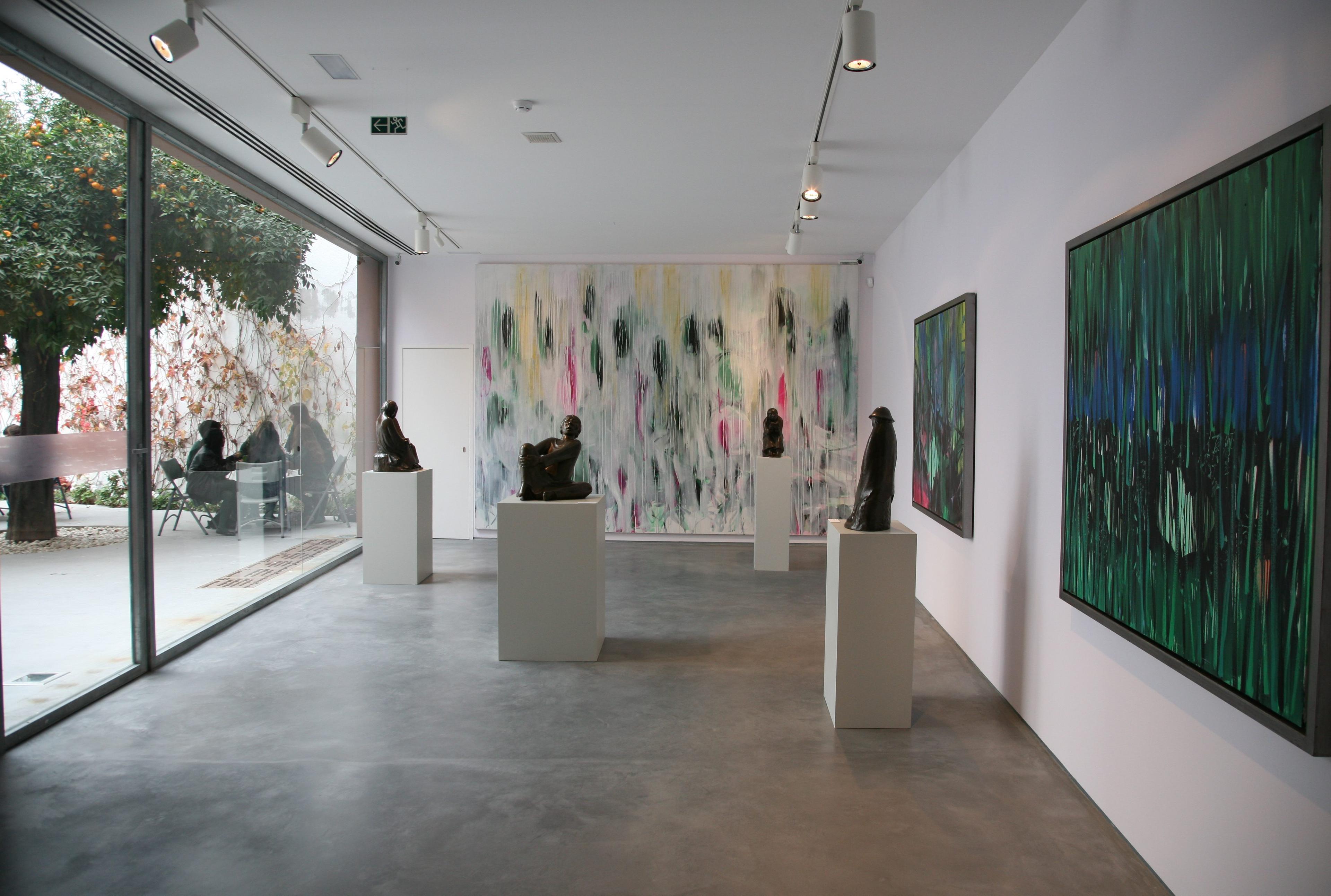
26.03 - 08.10.2017
Georg Baselitz Broken Heroes
By inverting his pictorial motifs, Baselitz develops a painterly pictoriality in which drawing, painting, and printmaking interpenetrate.
Barlach Art Museum Wedel
Georg Baselitz was born in 1938 in Upper Lusatia in Saxony and thus belonged to a generation that grew up in the middle of the Cold War. In 1958, the twenty-year-old Baselitz moved from East to West Berlin and left a country in which socialist realism was decreed by the state. Arriving in the Federal Republic, Baselitz's expressive style left its mark on figurative painting and gave it trend-setting impulses.
Even during his studies, Georg Baselitz consistently took a different path from his artistic environment, for from the very beginning his figurative painting was based on the deliberate alienation and deformation of the pictorial motif. In this departure from the then prevailing tendencies of a predominantly abstract painting, Baselitz sees for himself the only possibility of concretely expressing his individual sensitivities.
In recent art history, the work of Georg Baselitz is considered singular and unmistakable. Typical for him is the inversion of his pictorial motifs, which he began with the work "Der Wald auf dem Kopf" (The Forest Upside Down) in 1969. With his "upside-down" pictures Baselitz became nationally and internationally known and developed a pictoriality in which drawing, painting and printmaking interpenetrate.
For him, the graphic works in particular represent a direct approach to the pictorial motif. He first deals with the object as the starting point for his pictorial invention, segments it, turns it upside down, or takes up older motifs again and places them in a new, divergent context.
As early as the 1960s, Baselitz used the materiality and aesthetics of printmaking techniques to translate motifs from his painted pictures into a new language of signs. Especially in the numerous remix paintings, Baselitz is concerned with consolidating the form of the man he presents as a lonely, broken, and lost hero found in the painted or drawn image templates by means of an additional material-aesthetic analysis on paper "as a correction or as a clarification, as an exclamation point," as he himself says.
Baselitz's broken heroes are men who do not know where they belong, who have lost orientation, but also meaning and order, who have nothing left to do and who have nothing left to say. Once drawn out to shine gloriously and radiantly, they now stand in front of the ruins of their striving for power - crushed by an enormous life lie. And this is precisely what is expressed in the selected works, but especially in the remix works, in a condensed and almost more pointed manner than in the painterly and graphic models of the 1960s.
For Baselitz, printmaking expresses a completely independent artistic ambition, which can certainly also be described as an encoding or coding of the original pictorial motifs. This coding opens up new spaces of seeing and recognizing, for it unsettles, it destabilizes the location of the figure in the pictorial space. This destabilization is also transmitted to the viewer, who experiences himself more and more thrown back on himself. An essential element of this insecurity are the numerous empty spaces in the picture, which the painter friend Per Kirkeby once described in this way: "Baselitz's graphic work balances hair-sharp on the edge of emptiness, and from this arises the unusual feeling of a great drama. The great drama is conditioned precisely by the fact that it sees into the emptiness of the eyes and does not cover it up in horror through technical routine. It is so superior and ambiguous that some see it as awkward. In fact, however, it is uninhibitedly elegant; one is inmidst a drama of great risk."
The exhibition: "Georg Baselitz - Broken Heroes" was realized in close collaboration with private lenders. We thank for their kind support of the exhibition: Georg Baselitz, Detlev Gretenkort, Mathias Kunz, Bärbel Schäfer. Responsible: Jürgen Doppelstein, Heike Stockhaus. For the financial support we thank the city of Wedel, the district of Pinneberg and the Cultural Foundation of the State of Schleswig-Holstein.






